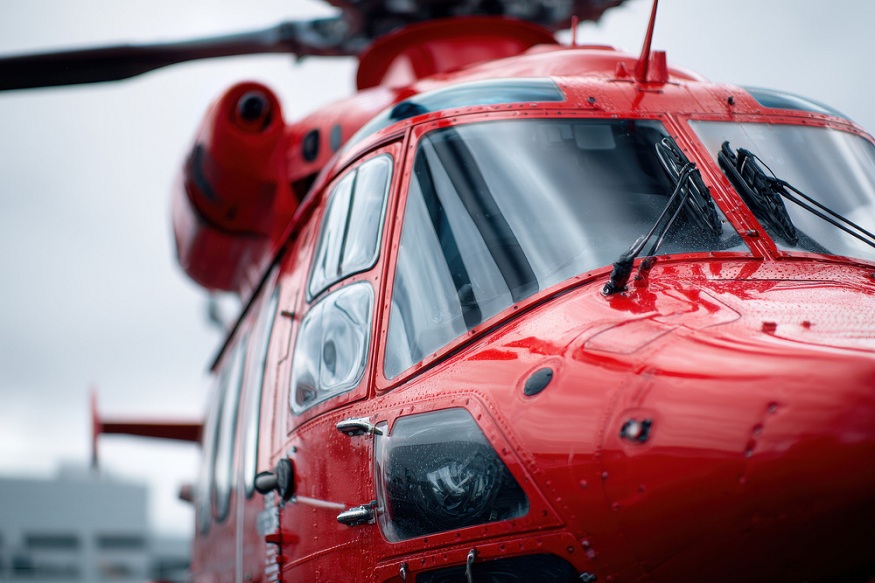Inside the World of Air Medical Preparedness
 Air medical teams arrive prepared, not merely relying on luck. Successful helicopter rescues require careful planning and training. These teams must be ready for anything. This includes the chaos of natural disasters and daring rescue missions in difficult locations. Readiness requires effort.
Air medical teams arrive prepared, not merely relying on luck. Successful helicopter rescues require careful planning and training. These teams must be ready for anything. This includes the chaos of natural disasters and daring rescue missions in difficult locations. Readiness requires effort.
Training That Never Stops
Medical flight teams undergo continuous training. Aviators train to fly in inclement weather, after dark, and during crises. They use flight simulators that generate realistic situations without actual risk. These software applications can replicate engine malfunctions, intense storms, and challenging landing scenarios.
Medical teams train in patient care as helicopters jolt and vibrate. They acquire skills to initiate IVs, use devices, and carry out CPR in limited areas. Training frequently occurs in real aircraft so that crews become accustomed to operating in confined spaces. Emergency situations frequently evolve during training exercises. At some point, teams may train to save hikers from peaks. The following day they might attend to a multi-vehicle crash on a crowded freeway. This diversity keeps everyone alert and prepared for actual emergencies.
Equipment Checks and Maintenance
Medical equipment gets inspected before each shift. Life-saving equipment must work perfectly. Teams use checklists to avoid oversights. Aircraft maintenance follows strict federal rules. Technicians routinely examine engines, rotors, and safety systems. They also verify that medical equipment remains securely fastened during the flight. Unsecured equipment can transform into hazardous missiles during abrupt movements. Battery systems require careful consideration because they energize essential life-saving devices. Backup batteries are regularly tested, and teams carry extra power supplies for essential devices.
Planning for Different Emergencies
Air medical services get ready for various kinds of emergencies. Medical emergencies and natural disasters need different approaches. Teams create custom strategies for any situation. Planning for weather requires significant time and effort. Teams analyze weather trends, seasonal variations, and regional climate factors. They are aware of which regions get hazardous at specific times of the year and adjust their routes accordingly. Communication strategies assist teams in remaining linked during significant emergencies. All radio frequencies, alternative communication techniques, and coordination with ground ambulances are meticulously planned.
Safety in Dangerous Areas
Teams may face danger on certain missions. Urban violence, accidents, and natural disasters create safety hazards. The experts at LifePort explain that ballistic protection and supplementary safety equipment allow teams to concentrate on rescue efforts.
Teams collaborate with law enforcement and fire services to establish landing zones and operational sites. The teams train to spot hazards and get help when needed. Protocols include guidelines for accident sites, hazardous materials, and unstable areas.
Supply Management and Logistics
Medical helicopters have restricted resources, making inventory management essential. Groups monitor medication expiration dates, oxygen levels, and the status of equipment. They also uphold connections with hospitals to manage supply requirements. Fuel planning influences every operation. Helicopters possess a restricted range, particularly when transporting heavy patients and equipment. Teams locate refueling spots and assess flight durations to ensure mission completion occurs safely.
Base locations are selected meticulously to ensure optimal coverage for their service regions. Teams evaluate response times, hospital placements, and geographic obstacles when determining where to position aircraft.
Conclusion
Air medical readiness includes numerous details that many individuals are unaware of. Every element is organized and rehearsed, from training on the simulator to maintaining equipment. Preparation separates successful rescues from failures.
If you spot a medical helicopter, remember the amount of preparation that made the flight possible. Expert teams properly maintained tools, and meticulous planning collaborate to offer hope to individuals enduring their most difficult times. Achieving that level of preparedness isn’t a coincidence. It requires commitment, practice, and continuous focus on specifics.
